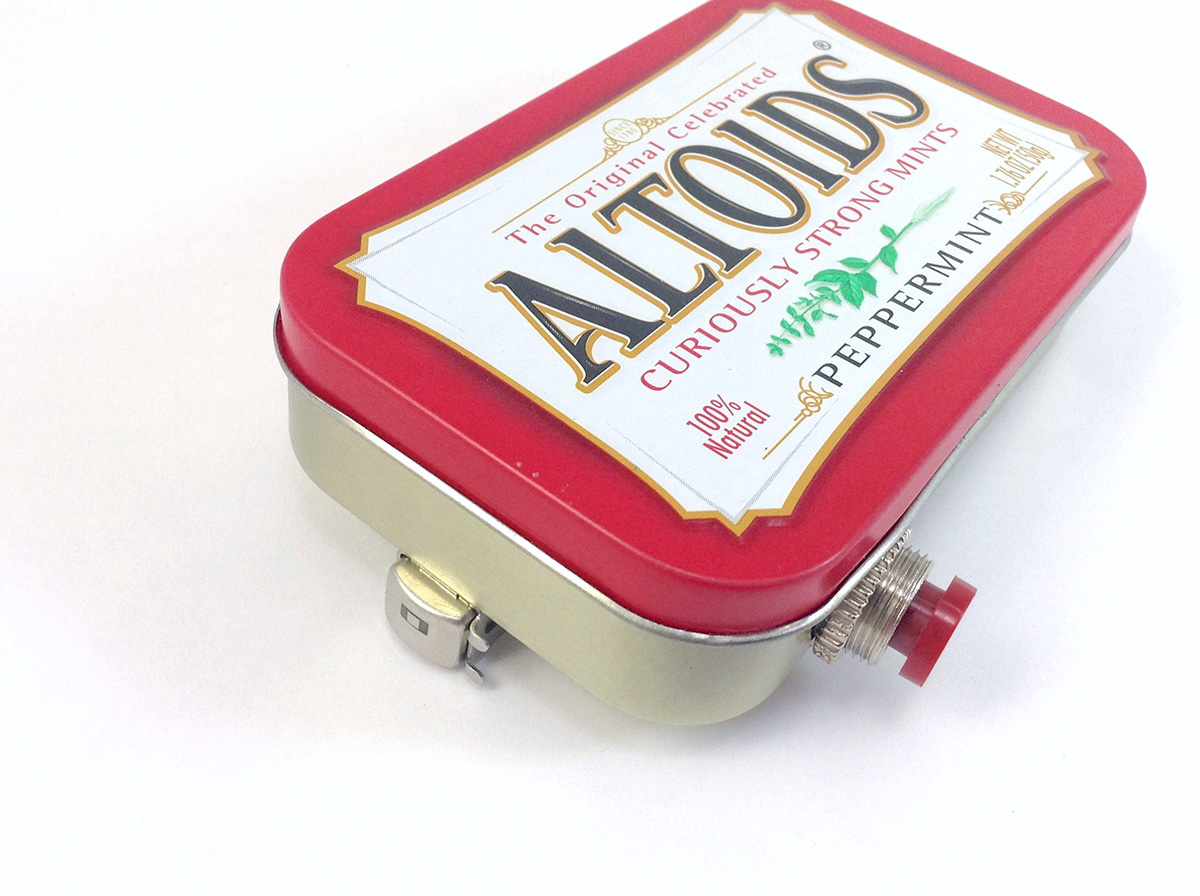
The Scratchbox
Hip-hop turntabalism arose from folks abusing their LPs and record players in an age when most casual music listening was done via cassette. Now that we’re two iterations of musical media down the road, it’s high time to bust up your old tape deck and find some new sounds.

A tape deck is actually a relatively simple device built around an amplifier hooked to a fairly sensitive electromagnetic transducer, a component that translates variations in a magnetic field into sound. With a little soldering, you’ll be ready to coax a whole host of old-skool skritches and scratches from expired credit, gift, and loyalty cards.
Nearly any cassette player will work for this project: you could use a Walkman or a boom box, with or without a recording function — even an old car stereo would do the trick. It’s totally fine, even preferable, for the tape deck to be “broken” because the part we want — the transducer itself, called a tape head — is most likely intact. If you happen to choose a working tape deck with a built-in speaker, and you don’t wreck it too badly while extracting the tape head, you can convert it to a quick-and-dirty amp for projects in this book or even “real” guitars and other instruments you have kicking around.
Behold the Magnetic Musicassette!
The cassette tape — christened the Compact Cassette by Philips when they released it in the Unit-ed States in 1964 — is essentially a miniaturized reel-to-reel setup, and it works along the same principles. A strip of plastic tape coated in ferric oxide (laboratory-grade rust, which is magnetic) runs at a constant speed across a tape head. During the recording process, an audio signal is pumped into the head, which imparts a magnetic field of varying intensities to the tape, analogous to the varying intensities of the sound waves. During playback, the moving magnetic tape induces its fluctuating magnetic field in the play head. An amplifier built into the cassette player boosts this signal and sends it to a speaker, which reproduces the original audio.
Although their fidelity was relatively poor, these so-called Musicassettes were the dominant medium for prerecorded music for about two decades. Their portability, convenience, and relative indestructibility — especially when compared to vinyl records or early compact discs — trumped audio quality. The format itself was designed from the ground up to make both playback and recording cheap, easy, and highly portable, which inevitably led to the folk art of self-expression via mixtape. The longevity of the mixtape highlights the utter absurdity of modern patent trolls claiming they invented “playlists” a good decade after teens across America agonized over whether Bonnie Tyler’s “Total Eclipse of the Heart” should be followed by Whitney Houston’s “How Will I Know” or Kenny Loggins’s “Highway to the Danger Zone.”





